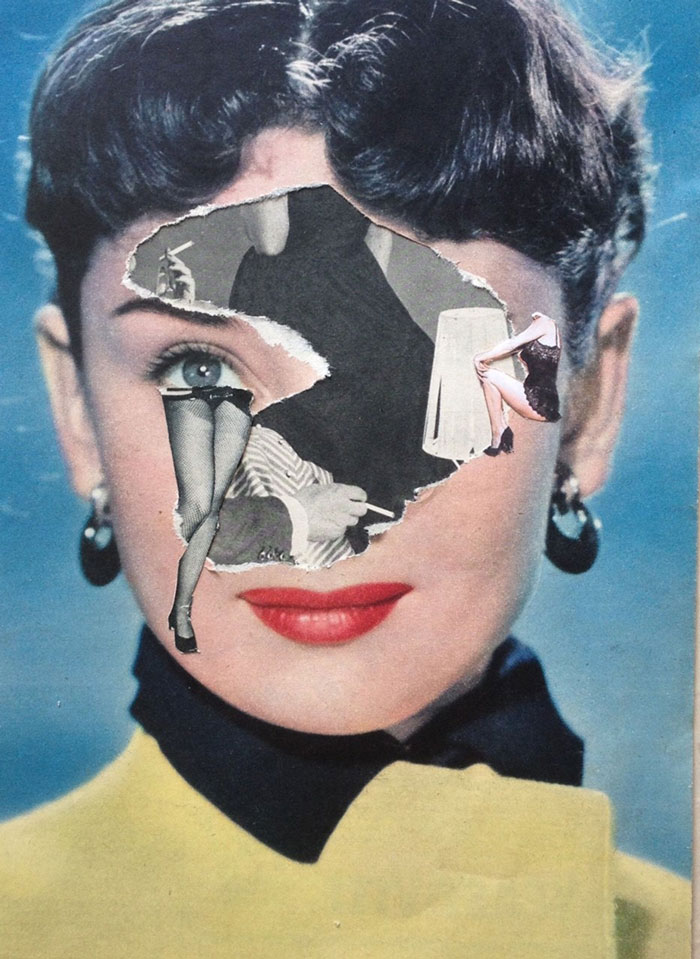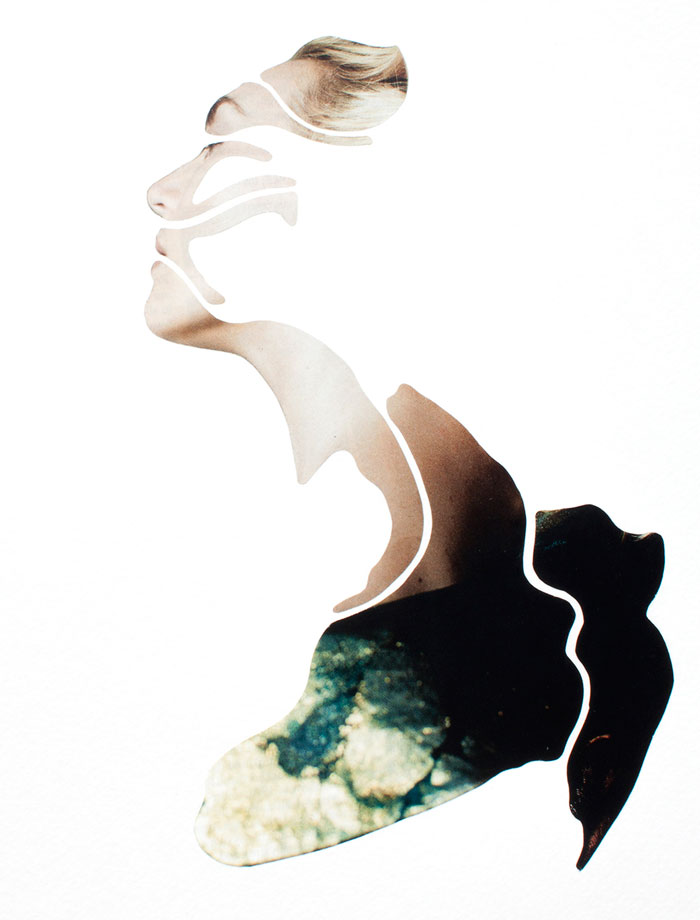
COLLAGE TAXONOMY
A minimalist collage where a fragment is emptiness
Collage artist Lee Honey suggested “Subtractive Collage” to the Taxonomy project. “You open the possibility of new meanings by removing part of an image and leaving it blank,” writes Honey. “This concept is closely connected to the category of minimalist collage.” Honey’s suggestion raises all sorts of interesting questions about collage, minimalism, and the role and nature of fragments.
This collage taxonomy article appears in KOLAJ #20. For your own copy of the article, SUBSCRIBE to Kolaj Magazine or Get a Copy of the Issue.
In discussing collage, it is often helpful to deconstruct a collage into fragments. This allows one to describe compositional elements, aesthetic choices, and poetic juxtapositions. The story of fragments in a collage can allow a critic to draw out the conceptual underpinnings of the artist or the emotional impact of the artwork. Typically fragments are cut out of source material and many artists speak of particular fragments as sources of inspiration for their collage. What happens, then, when a fragment isn’t a fragment at all? Negative space is a ubiquitous tool for an artist. Sometimes the space surrounds the composition and sometimes the composition surrounds the space. That is not the subject of this article.

Subtraction is a technique where elements are removed from the artwork. An apocryphal story oft repeated in the art world recalls how when Michelangelo was asked how he made his iconic sculpture, the artist replied, “I just removed everything that wasn’t David.” Subtraction allows an artist to focus the emotional thrust of an artwork by removing elements that distract from it. The technique of subtraction also opens new possibilities. Susan Wicker, in the collage Out of Time, tears away Audrey Hepburn’s face to reveal an image underneath and comment on women’s experience of the world. But this is different than what Honey is proposing: a minimalist collage where elements are removed.
A clear example of subtractive collage is Poor Over Slowly by Jacob Spriggs. The head and shoulders profile of a woman is cut away and what remains is a pattern made of the negative space. In this sense, we can identify two fragments in Sprigg’s collage: the image and negative space. The use of negative space as a fragment in the collage’s composition is the defining characteristic of a subtractive collage.

To further complicate the issue, the negative space does not always need to be white and empty. The title sequence of season two of The Leftovers, a popular series about how the world deals with the sudden disappearance of 140 million people, was designed by Angus Wall at the design firm Elastic. It showed a slideshow of subtractive collage: still shots with people cut out and replaced with a silhouette of sky or weather. While this differs from Honey’s suggested definition it conforms with a previously argued definition for minimalist collage which uses only two or three fragments.
Why is it important to make a distinction between technique and category? Techniques are useful to artists. They supply the wheelhouse from which they make artwork. Being knowledgeable about technique can inform a viewer’s experience of artwork but rarely does successful art trade on marveling at an artist’s prowess. The category of subtractive collage informs the viewers visual vocabulary and permits deeper reading of the artwork. It allows critics and curators to foster a deeper understanding and appreciation for collage.
This collage taxonomy article appears in KOLAJ #20. For your own copy of the article, SUBSCRIBE to Kolaj Magazine or Get a Copy of the Issue.
Images (top to bottom):
Out of Time by Susan Wicker (10.6″x7″; collage; 2016)
Poor Over Slowly by Jacob Spriggs (14″x11″; analog collage; 2015)
Still from title sequence for The Leftovers by Angus Wall working for Elastic
